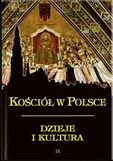Staropolska codzienność w świetle dyskursu bernardyńskich kazań epoki saskiej
Old Polish everyday life in the light of the discourse of the old Bernarinian sermons of the Saxon epoch
Author(s): Filip WolańskiSubject(s): Cultural history
Published by: Katolicki Uniwersytet Lubelski Jana Pawła II - Wydział Teologii
Keywords: History of Franciscans; the ministry of Franciscans; the missionary’s work of Franciscans; patriotic engagements of Franciscans; scietific and cultural activities of Franciscans
Summary/Abstract: The article presents the ways the Franciscan Observants Order preachers of the Saxon epoch reached worshippers through referring to aspects of their everyday life Franciscan Observants Friars activities were presented in the light of the growth in significance of the Catholic Church in Poland at the beginning of the 18th century which resulted from the success of the post-Trent reforms. The role of the preacher’s service in religious life was also presented in this context. The meaning of monastic preaching, including the one of Franciscan Observants Friars, was particularly stressed. The main qualities of the Baroque penmanship in sermon writing were outlined too. The author has analysed three main areas of reference to everyday life in these sermons as highly conventionalised texts. They were: religiousness of the believers, their morality, social reality and historical memory. Sarmatian religiousness is strongly connected with the worship of the Holy Mary and this fact was reflected in the homiletics. This was a quality characteristic for the Saxon epoch. The opportunity for the development of predictions were the numerous and based on Marian coronations performances. Another significant context was formed by the Saints’ Worship and pompa funebris. Morality was mainly used for depicting axiomatic messages therefore there were numerous references to behaviour from which examples were drawn from everyday life. References to the historical memory in sermons appeared in the contexts of Holy history, the history of Poland and the popular history in the light of the contemporary chronicles and finally in relationship with genealogical traditions.
Journal: Kościół w Polsce. Dzieje i kultura
- Issue Year: 2010
- Issue No: 9
- Page Range: 289-295
- Page Count: 11
- Language: Polish

